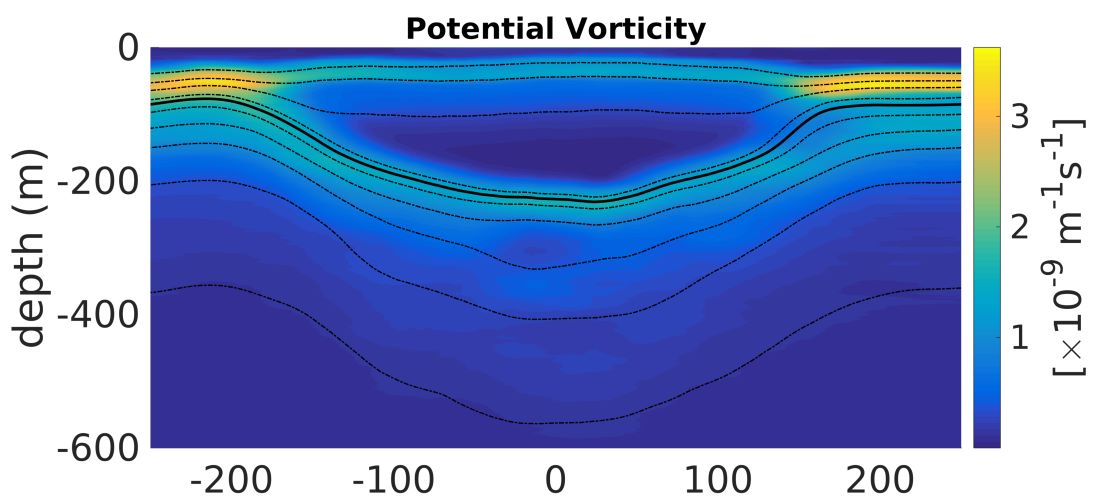This study investigates the vertical structure of the dynamical properties of a warm-core ring in the Gulf of Mexico (Loop Current ring) using glider observations. We introduce a new method to correct the glider’s along-track coordinate which is, in general, biased by the unsteady relative movements of the glider and the eddy, yielding large errors on horizontal derivatives. Here, we take advantage of the synopticity of satellite along-track altimetry to apply corrections on the glider’s position, by matching in situ steric height with satellite-measured sea surface height. This relocation method allows to recover the eddy’s azimuthal symmetry, to precisely estimate the rotation axis position, and to compute reliable horizontal derivatives. It is shown to be particularly appropriate to compute the eddy’s cyclo-geostrophic velocity, relative vorticity, and shear strain, which are otherwise out of reach when using the glider’s raw traveled distance as an horizontal coordinate. The Ertel potential vorticity (PV) structure of the warm core ring is studied in details, and we show that the PV anomaly is entirely controlled by vortex stretching. Sign reversal of the PV gradient across the water column suggests that the ring might be baroclinically unstable. The PV gradient is also largely controlled by gradients of the vortex stretching term. We also show that the ring’s total energy partition is strongly skewed, with available potential energy being 3 times larger than kinetic energy. The possible impact of this energy distribution on the Loop Current rings longevity is also discussed.

